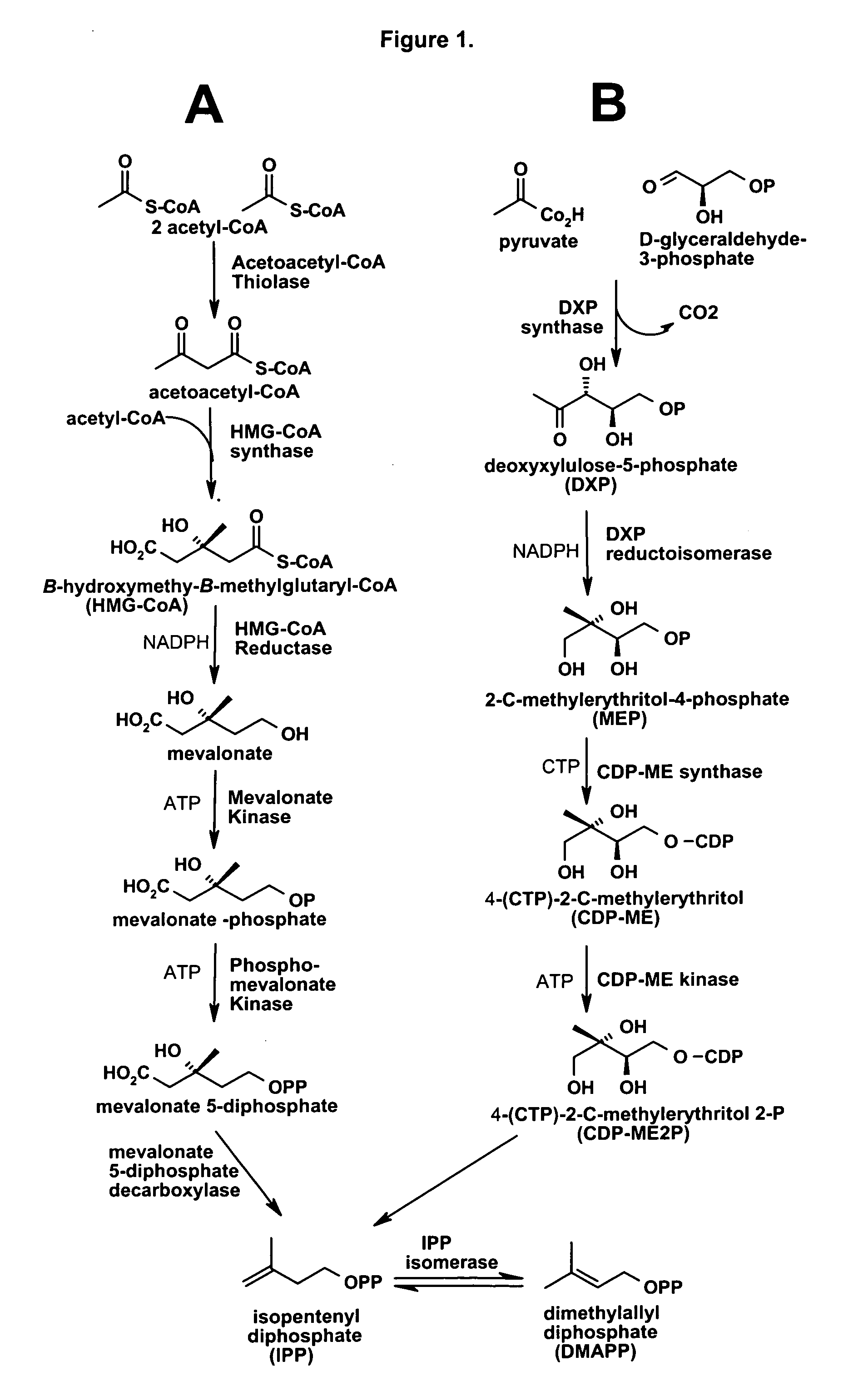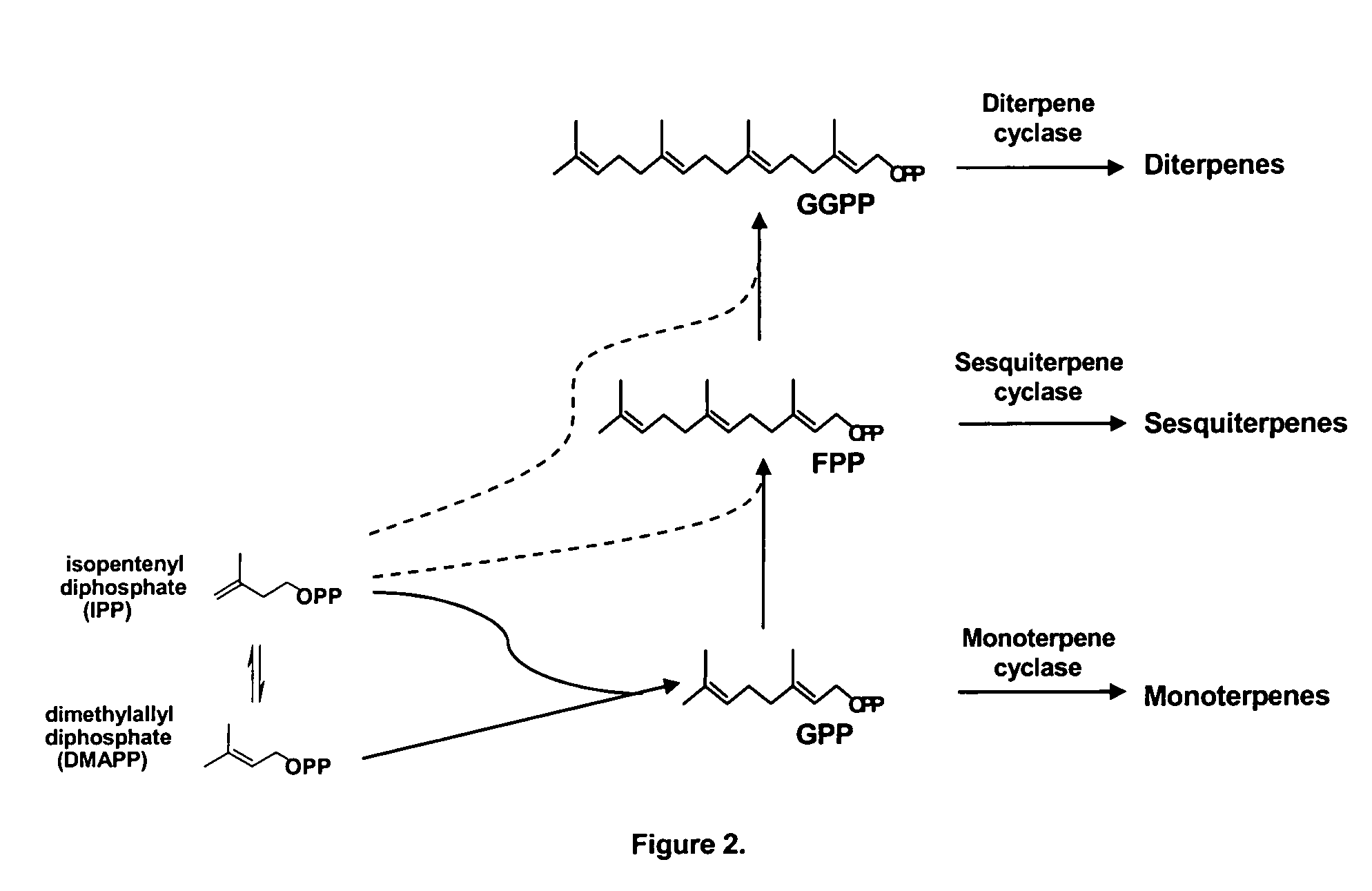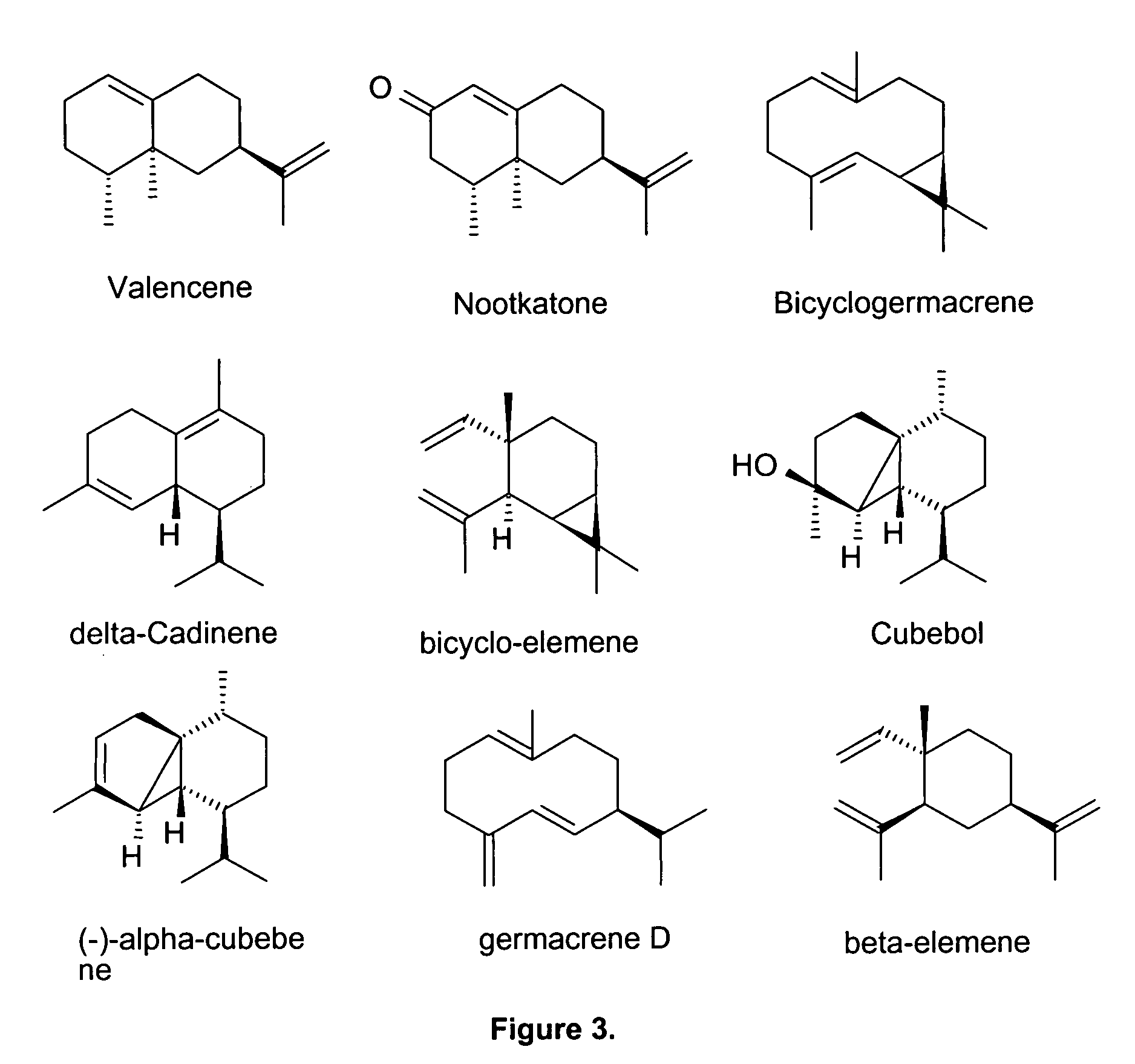Sesquiterpene synthases and methods of use
a synthesizer and synthesizer technology, applied in the field ofsesquiterpene synthases, can solve the problems of inability to synthesise at an acceptable cost, fluctuation in availability and price,
- Summary
- Abstract
- Description
- Claims
- Application Information
AI Technical Summary
Problems solved by technology
Method used
Image
Examples
example 1
Isolating Sesquiterpene Synthase cDNA using RT-PCR
[0085]The deduced amino-acid sequences of plant sesquiterpene synthases were aligned to identify conserved regions and design plant sesquiterpene synthases-specific oligonucleotides. In order to obtain better sequence homology, the sequences were separated into two groups (FIG. 4). The first group contained the sequences of the Germacrene C synthase from Lycopersicon esculentum cv. VFNT cherry (Colby et al, 1998), the (E)-β-farnesene synthase from Mentha x piperita (Crock et al, 1997), the 8-selinene synthase from Abies grandis (Steele et al, 1998), a sesquiterpene synthase from Citrus junos (GenBank accession no. AF288465) the 5-epi aristolochene synthases from Nicotiana tabacum (Facchini and Chappell, 1992) and from Capsicum annuum (Back et al, 1998), the vetispiradiene synthases from Solanum tuberosum and from Hyoscyamus muticus (Back and Chappel, 1995). The second group contained sequences of the (+)-δ-cadinene synthases from Gos...
example 2
Isolating Sesquiterpene Synthase cDNA using 5′ / 3′-RACE
[0091]To isolate the full-length sequences of the sesquiterpene synthases, a 5′ / 3′-RACE approach was first used. cDNA was synthesized using Marathon™ cDNA Amplification Kit (Clontech) and starting from 1 μg mRNA purified from total RNA prepared with the Hot Borate technique. The quality of the synthesized cDNA was poor, essentially small size cDNAs were obtained (average size of 0.5 Kb). However, using this cDNA, the 3′-end of the GFTpsB and GFTpsC were obtained using the gene specific primers GFTpsBRF1 and GFTpsBRF2 for GFTpsB and the gene specific primers GFTpsCRF1 and GFTpsCRF2 for GFTpsC (see Table 1). mRNA prepared by the guanidinium-thiocyanate / phenol extaction method gave higher quality cDNA with an average size of 2 Kb and allowed the isolation of the 5′-end sequence of GFTpsC using the gene specific primers GFTpsCRR1 and GFTpsRR2 (see Table 1), completing the full-length sequence of this clone. The 5′-end of GFTpsB and t...
example 3
cDNA Library Screening and EST Sequencing
[0098]In order to obtain the full-length cDNA of the partial clones obtained by the PCR approach, a cDNA library prepared from grapefruit flavedo mRNA was constructed.
[0099]cDNA synthesis and library construction were performed using the Uni-ZAP® XR library construction Kit (Stratagene) according to manufacturer's protocol starting from 7.5 μg grapefruit flavedo mRNA (prapared by the Guanidinium-Thiocyanate / Phenol method). The original titer of the library was 2×107 PFU (plaques forming units) and the average insert size was 1.1 Kb.
[0100]Two approaches were used to isolate sesquiterpene synthases encoding cDNAs from the cDNA library: EST sequencing and screening using a DNA probe. For EST (expressed sequence tag) sequencing, a fraction of the library was used to excise the pBluescript phagemid from the Uni-ZAP XR vector according to Stratagene's mass excision protocol. Resulting transformed bacterial colonies (576) were randomly picked and th...
PUM
| Property | Measurement | Unit |
|---|---|---|
| pH | aaaaa | aaaaa |
| thickness | aaaaa | aaaaa |
| volume | aaaaa | aaaaa |
Abstract
Description
Claims
Application Information
 Login to View More
Login to View More - R&D
- Intellectual Property
- Life Sciences
- Materials
- Tech Scout
- Unparalleled Data Quality
- Higher Quality Content
- 60% Fewer Hallucinations
Browse by: Latest US Patents, China's latest patents, Technical Efficacy Thesaurus, Application Domain, Technology Topic, Popular Technical Reports.
© 2025 PatSnap. All rights reserved.Legal|Privacy policy|Modern Slavery Act Transparency Statement|Sitemap|About US| Contact US: help@patsnap.com



